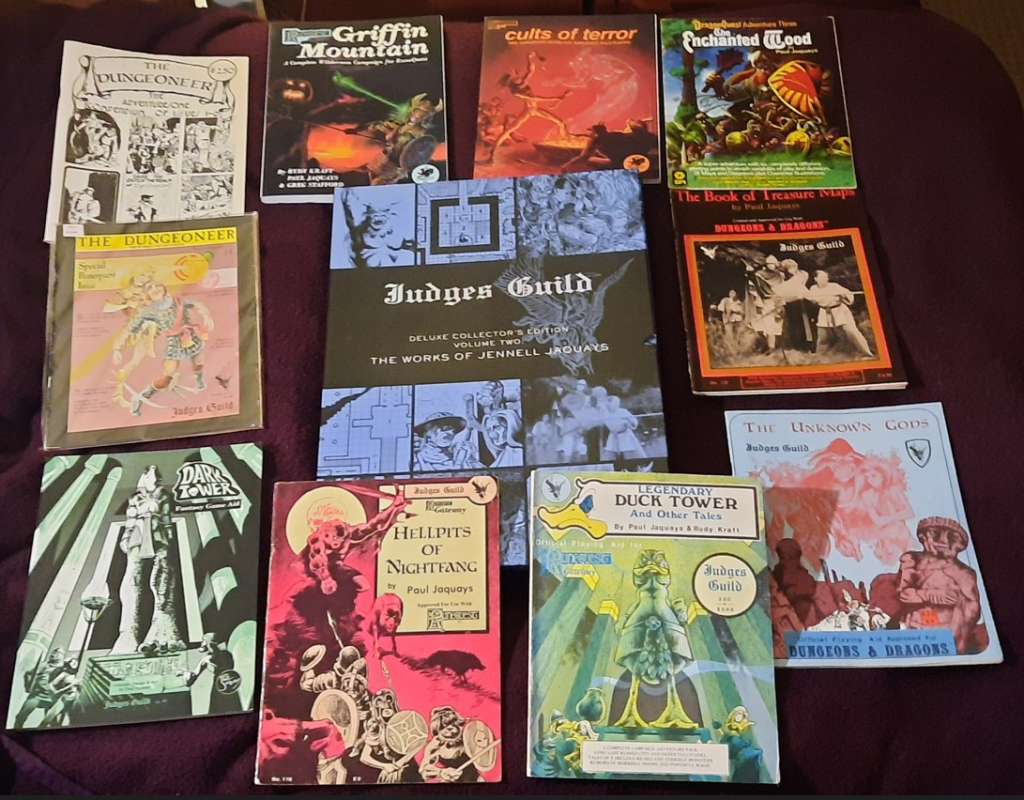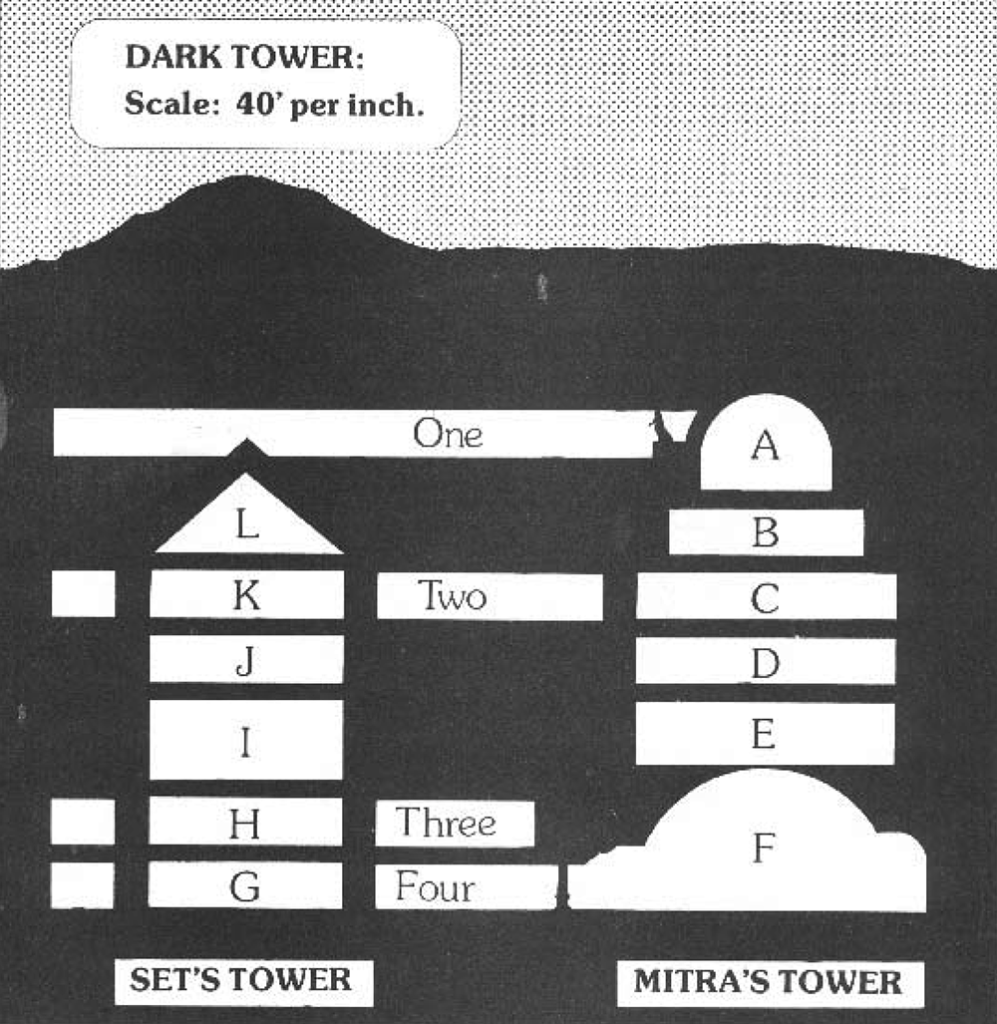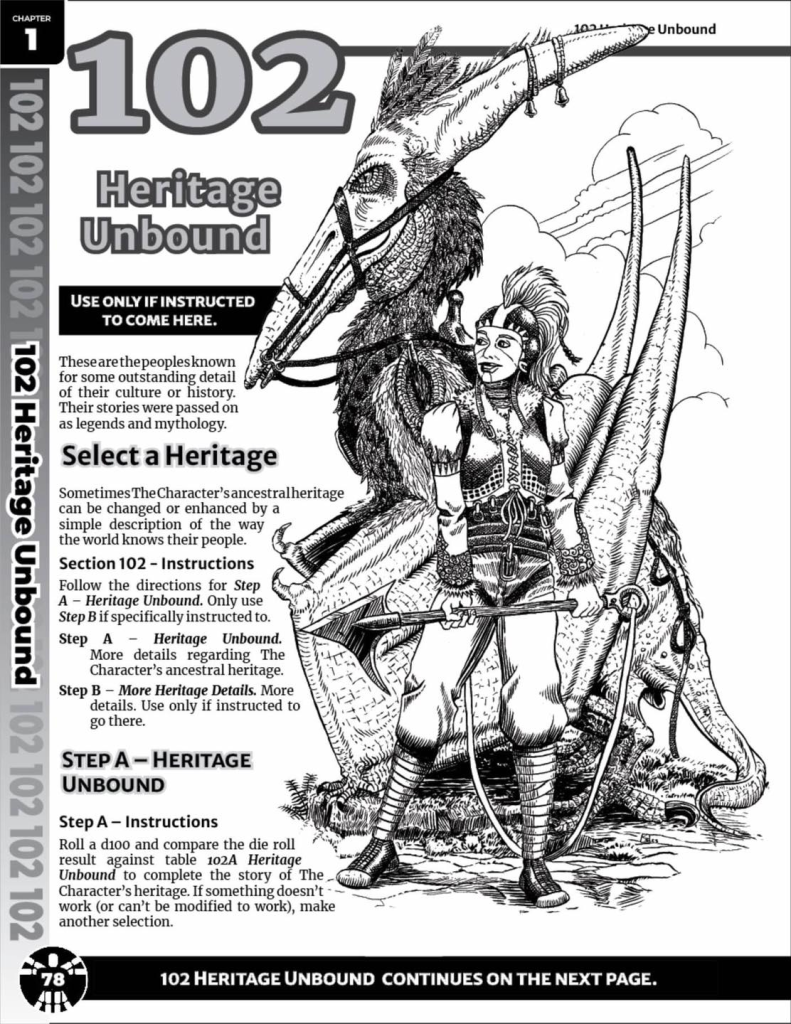
In 1975 and 1976, the gaming community was thrumming with a pent-up creativity enabled by the brand-new Dungeons & Dragons game (1974). One of the young creators electrified by this new creativity was college student Jennell Jaquays, who cut her teeth on Tunnels & Trolls (1975) in the waning days of 1975, but was holding out for Dungeons & Dragons, which she was finally able to play in February 1976, after the arrival of a delayed shipment of the game from Metagaming Concepts. Jennell passed away on January 10, 2024 after a months-long battle with Guillain-Barré syndrome, but her influence on the industry remains.
Collegiate Delves: 1975-1978

Jennell Jaquays’ story starts with The Fantastic Dungeoning Society, an organization of friends at Spring Arbor College in Michigan that was created to publish a fanzine about Dungeons & Dragons. The result was The Dungeoneer #1 (June 1976), produced by editor-in-chief Jennell Jaquays with support from long-time friends J. Mark Hendricks and Merle Davenport.
Jennell’s The Dungeoneer was historic in many ways. It was one of the earliest ‘zines entirely dedicated to roleplaying games, trailing Alarums & Excursions (1975-Present), which was a less cohesive APA, and preceding Judges Guild Journal (1976-1981), which began as an integral part of Judges Guild’s larger “subscription” package. That first issue of The Dungeoneer also contained a dungeon from Jennell, “F’Chelrak’s Tomb”, which was one of the first independent dungeons in the industry, trailing Wee Warrior’s Palace of the Vampire Queen (1976) by scant weeks.
Thus, innovation was a part of Jennell’s story from the start: innovation fueled by fearless creativity. And that creativity went beyond just the dungeon design or even the editing of the magazine itself. Jennell was an art student, and so she also contributed the cover of The Dungeoneer #1, a whimsical piece depicting a wizard swatting at an “ugly” henchman. It showed Jennell’s art style, which would add wit and humor to many books over the years, already fully mature.
That wasn’t Jennell’s only early work in the industry. She also displayed her pioneering spirit with early art for The Space Gamer (1975-1990) and even The Dragon #1 (June 1976, out the same month as The Dungeoneer), all while also editing another five issues of her own ‘zine. A few years down the road, Jennell would even earn the cover for The Dragon #21 (December 1978) with “Ice Dragon”, a piece that she created for her Senior Art Show.
Exiting college, Jennell was thus a triple threat, experienced in game design, art, and entrepreneurship alike. It’s no surprise that she was the one member of the F.D.S. to break into the roleplaying field.
Judges Guild: 1978-1979

Jennell Jaquays was perhaps best known for the work that she did while working at Judges Guild, the prime manufacturer of D&D accessories in the late ’70s. Or rather the work she did while working at home in Michigan and remotely corresponding with Judges Guild — for her skill and expertise in the young industry was sufficient that she could request such an environment and actually receive it.
Remarkably, all of Jennell’s Judges Guild work, including four adventures and various covers and other artwork, was done over the course of a single year. There are few others in the industry then or now who could make such strong creative use of a single year of time, but Jennell did. Although some of her work was for Judges Guild’s RuneQuest license, including the Legendary Duck Tower (1980) authored with Rudy Kraft, it may be a pair of D&D modules that Jennell will be best remembered for: The Caverns of Thracia (1979) and Dark Tower (1980).
Jennell called Dark Tower a “tour de force” in a 1978 letter to Bob Bledsaw of Judges Guild. It and The Caverns of Thracia are no less so today. In fact, they are two of the most notable dungeon designs from any era of D&D production. They’re what are now called non-linear dungeons, which is to say dungeons without standard methods of entrance or exit, without required paths leading between levels. Instead, they are vast, open delves that every group might approach differently. Dark Tower may be the more intricate with its tightly interconnected dungeons and towers, but The Caverns of Thracia is no less fascinating. Today they remain not just brilliant insights into the largely unknown megadungeons played out on countless kitchen tables during the birth of the industry, but also are entirely playable scenarios thanks to Jennell’s considerable skill.
Freelancer to the Stars: 1979-1997

Jennell’s career in the roleplaying industry lasted almost two decades, with a five year or so gap while she worked at Coleco from 1980-1985. (Many roleplaying designers took their expertise to the computer gaming field in its early years, with Jennell being one of the pioneers.) Jennell’s roleplaying work included freelance work before and after her stint at Coleco, then a full-time job at TSR in the mid ’90s, after which she headed back to the computer game field for good.
Jennell did considerable artwork and design alike across those decades, from supporting Blade’s innovative Citybooks (1982-1992, 1997) to providing graphic design for TSR’s Dragon Dice (1995), from developing Mystara’s Isle of Dawn in M5: Talons of Night (1987) to putting her stamp on the industry’s biggest roleplaying setting in FR5: The Savage North (1988). Jennell also tried her hands at miniatures design during her freelancing years, first creating conceptual designs for Martian Metals’ Traveller figures, then sculpting their RuneQuest figure herself. Jennell’s creativity was nothing but multivariate. She contained multitudes.
In this era, two pieces in particular stand out.
The first was Griffin Mountain (1981), another RuneQuest adventure coauthored with Rudy Kraft. It had originally been intended for publication by Judges Guild as a “RuneQuest Gateway” adventure called “Adventures Beyond the Pass”. However, Glorantha creator Greg Stafford asked to see the manuscript, and he liked it so much that he brought it over to Chaosium so that it could be published as part of his mythical world. The 202-page book was one of the largest adventures the industry had ever seen, and like Jennell’s earlier dungeon work, it was a master of non-linearity, but transported to a wilderness environment. In fact, it’s a blueprint for what sandboxed wilderness adventure should be, full of forces on the edge of conflict and mysteries and secrets waiting to be uncovered.
The second was Central Casting, a trilogy of books that provided random backgrounds for Heroes of Legend (1988), Heroes for Tomorrow (1989), and Heroes Now! (1991) — which is to say characters in any era. The project dated back to social-status tables that Jennell had created in college and was published in an early form as “The Fantasy Role-Playing Previous History System” for The Dungeoneer #9 (January/February 1979). However, that was just the prelude for the dense, creative works of the three Central Casting volumes. Like much of Jennell’s work, these books were mammoth undertakings; like much of her work they were vastly innovative, filling a niche that no one had realized needed filling; and like much of her work they continued to be used decades after their publication.
After the Industry: 1997-2024

After her stint at TSR, Jennell was able to leverage her skills into a much-deserved job as a level designer for id Software, working with other roleplaying expatriates such as Sandy Petersen on projects such as Quake II (1997). A variety of other computer game companies would follow.
But, Jennell was never forgotten by the roleplaying industry. A multitude of companies returned to her work over the years in new editions such as Moon Design’s Griffin Mountain (2001), QLI’s Dark Tower (2001), and Necromancer Games’ Caverns of Thracia (2004). The quality and longevity of Jennell’s work was proven by these twenty-first century revivals, most recently resulting in two collector’s edition releases from Goodman Games, the Judges Guild Collector’s Edition Volume 2 (2021), which reprinted much of her Judges Guild work in an oversized format, and a massive Dark Tower update (2024?), which raised almost half-a-million dollars on Kickstarter from nearly 3,450 fans, and which is currently at the printers.
Prior to her death, Jennell was also working on a massive new edition of Central Casting with beautifully integrated text, art, and graphic design. It demonstrated her continued growth over the years, and given its near complete status, we may still see it as a final gift from one of the industry’s earliest innovators.
Though much of this article speaks of Jennell’s considerable success in her creative endeavors and the innovation it brought to the industry, it doesn’t speak to one other fact: much of her work was done under what she later recognized as a “nom de plume”. In 2011, Jennell announced her identity as a lesbian and a trans woman. Without missing a beat, she turned her own experiences to the support of others, becoming the Creative Director of the Transgender Human Rights Institute and fighting against conversion therapy.
Many have described Jennell as kind and supportive, and I’ve found that to be true in my own conversations with her, when she was kind enough to walk back through decades of memories to help lay out the history of the industry. That kindness, as much as her creative works for the industry, is why her loss is so grievous, not just for her friends and family, but to everyone who was touched by her.
If you were touched by Jennell’s works, please support her widow Rebecca Heineman in paying down the medical bills generated by the ruthlessly capitalistic American medical industry.
Special thanks to Andrew Sutton for his permission to use the picture of Jennell’s works at the head of this article. The towers map is from Dark Tower, and the dragonewt drawing is from Griffin Mountain. The Central Casting page in this final section is from one of Jennell’s previews of the work and is copyright her estate.
References
Alexander, Justin. 2010. “Xandering the Dungeon”. The Alexandrian. https://thealexandrian.net/wordpress/13085/roleplaying-games/xandering-the-dungeon.
Clerc-Renaud, Antoine and Jean-François Dupuis. 2016. Coleco: The Official Book.
Jaquays, Jennell. 2012. “News & Updates”. Jennell Jaquays blog. https://web.archive.org/web/20120609223435/http://jaquays.com/jennell/index.html (archive).
Jaquays, Jennell. 2013. “Re: Q&A with Jennell Jaquays”. Dragonsfoot. https://www.dragonsfoot.org/forums/viewtopic.php?p=1323254#p1323254.
Jaquays, Jennell, et. al. 2021. Judges Guild Deluxe Collector’s Edition, Volume Two.
Maliszewski, James. 2010. “Interview [Jennell] Jaquays (Part One)”. Grognardia. https://grognardia.blogspot.com/2010/07/interview-paul-jaquays-part-i.html.
Maliszewski, James. 2010. “Interview [Jennell] Jaquays (Part Two)”. Grognardia. https://grognardia.blogspot.com/2010/07/interview-paul-jaquays-part-ii.html.

Rest in peace Jannell, the entire field of RPGs is so much better for all your contributions. I look forward to cracking open my copy of Goodman Games reprinting of Dark Tower when it arrives this year and diving into your work once again.
Jennell also painted all the Fighting Ships in Traveller’s Supplement 9, based off rough sketches and/or descriptions from Timothy B. Brown.
Those ship portraits are still being used by gamers today.
What incredible contributions. When I did some work for MCDM on possible “career path” approaches, Central Casting is where I immediately went to for inspiration. I hope we still get to see the work she did to revise it. And those Planescape covers! I just swoon when I look at the vibrant colors, the incredible landscapes, the amazing figures and ships.
I have my fingers crossed that we might see Central Casting from Goodman Games, mainly because they did *so* right by her in the last few years.
[…] few more good eulogies have surfaced from Chaosium, of course, Steve Jackson Games, Gnome Stew, and Shannon Appelcline. Also note this important […]
[…] Shannon Appelcline’s Designer’s & Dragons […]